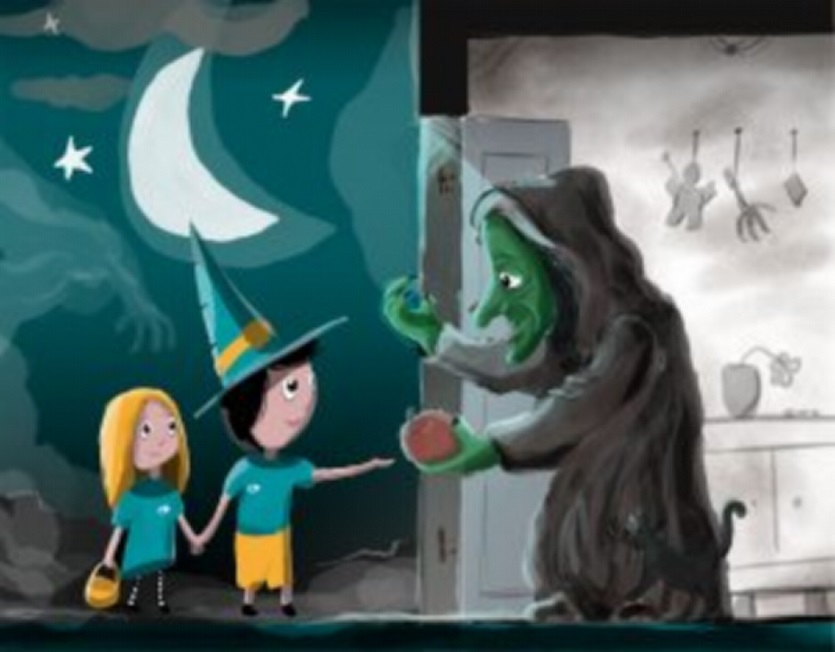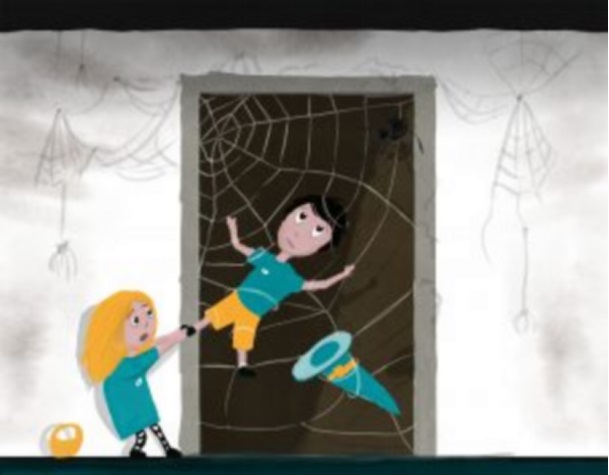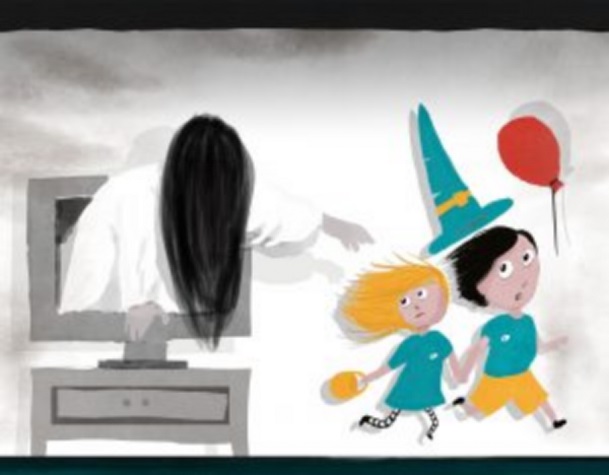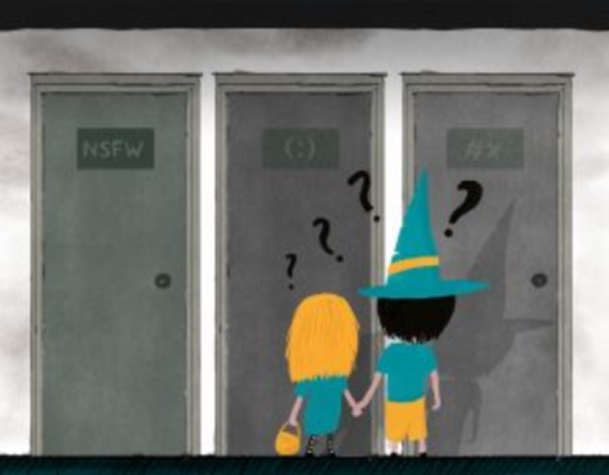Amer Owaida, Security Writer at ESET highlights what are some of the key dangers faced by children online and how can you help protect them from the ghosts, ghouls and goblins creeping on the internet?
Halloween, the scariest day of the year, is upon us. That can mean only one thing: children donning costumes of either their heroes or the scariest thing they can think of, and running door to door trying to gather as many sweets from their neighbors as they can. However, while some of the ghosts and ghouls, warlocks and witches on the streets are imaginary, the ones that can be found in cyberspace are all too real.
In this article, we’ll look at some of the key risks faced by children online and share tips that’ll help you keep them safe this Hallow’s eve, both on and off the internet.
 Giving the device the heebie-jeebies
Giving the device the heebie-jeebies
On Halloween, most people go all out – thought out costumes, decorated houses, spooky candy. And kids might take it a bit further decking out their smartphones with all manner of Halloween cheer – spooky ringtones, scary themes, or even Halloween-themed apps that make scary noises, or scary games.
However, kids probably won’t be willing to dive into their allowance to purchase these fun apps outright and will rather look for workarounds or freebies. That may include looking for goods on unofficial app stores, clicking on possibly malicious ads, or downloading apps from questionable developers. Any of these could lead to their devices being compromised with malware.
Beyond using a reputable security solution to protect their devices, you should probably have a discussion with your kids about proper cybersecurity habits such as sticking to official sources, when downloading any type of media, be it ringtones, themes, or apps.
 Specters stalking cyberspace
Specters stalking cyberspace
While kids would prefer to pretend that monsters are limited to make-believe, and people in costumes to Halloween, adults know that monsters can be all too real; especially in the digital realm. They, too, wear costumes, sometimes donning the disguise of a friendly stranger, other times hiding behind the mask of a peer, but always for nefarious reasons.
The monsters hiding behind these made-up identities engage in the act of grooming – where they prey on the innocence of their victims and try to gain their trust and gradually try to lower their inhibitions. They do this by using various techniques including psychological manipulation and persuasion, with the ultimate goal being to abuse their victims in various ways.
So how do you go about teaching your kids about the dangers looming in the shadows of the internet? The first step is to have a frank and open conversation about it, make them feel safe and understand that they can trust you and come to you with any problem. The second piece of advice is one that has been heard many times over: “don’t talk to strangers”. Especially online! Finally, although attitudes to parental controls differ, employing them to monitor your kids’ internet activities and what they put on social media. However, that should be done with your kids while teaching them the importance of privacy.
 Stealing can-dentity from a child
Stealing can-dentity from a child
As with every holiday season, scammers will be trying to trick targets with specially themed phishing campaigns and so part them from their credentials. And while adults may be able to distinguish faux emails from the real deal, kids, who are more trusting, can be duped more easily.
The scammers can customize the phishing campaign to be anything like an email warning of unauthorized access to a social media account or Halloween-themed heavy discounts. Your children could receive a message purportedly linking to a steeply discounted pair of coveted sneakers, but by clicking on the link they either infest their devices with malware or are redirected to a phishing website.
On this website, they’ll be asked to sign in with their social media credentials to begin the claims process and by the end of it, they’ll probably have to type in their payment card data too. And just like that, their identities and payment information have been purloined by the cybercriminals, actually stealing candy from a children.
While most phishing emails will be caught by spam filters, some still manage to wriggle through the net; so, it is important to teach your children how to protect themselves against phishing and to notice the signs that they’re dealing with a scam. This includes spelling mistakes, evoking a sense of urgency, requesting too much personal information or the email coming from a dubious domain. Using two-factor authentication can also add an extra layer of security.
 Scaring the IT out of you
Scaring the IT out of you
Night has set, your kids have finished trick-or-treating and they’re about to gear up for dreary, scary, and spooky movie night with their friends. Usually, that entails brainstorming and picking from a list of scary classics up to modern-day remakes.
Once they settle on something, perhaps Stephen King’s “It”, they’ll probably try to find somewhere to stream it online and optimally for free. However, pirate streaming websites open up a whole can of worms. First of all, most free streaming websites teeter on the edge of legality, which might get them in hot water. And secondly, these websites usually spam users with popup ads or adware that in most cases are trying to generate revenue but can sometimes be infested with malware. Some of them even use scare tactics to convince people that their devices have been compromised. Kids who can easily be duped by these ads can then click on them and download the malware to their devices, compromising them for real.
Most of the adware can be caught by the safety net of trusted ad-blocking extensions you can add to your browser. But the best effect is teaching your kids to avoid visiting dubious websites that use similar tactics. You can rent most movies online or use official streaming services.
 Losing your way
Losing your way
Kids are a curious bunch, and they like to explore and discover things. However, an exploration trip through the internet isn’t always an entirely safe affair. And without at least some form of oversight, they might see age-inappropriate stuff or get themselves into a world of trouble.
For example, while searching for Halloween-themed content ranging from scary urban legends to spooky games and images, they might stumble upon gory content or not-safe-for-work (NSFW) content that is more aimed at an adult audience. This can happen despite their best intentions since not all websites are strict with moderating their content or have age restrictions in place. That’s where parental controls can come in handy.
Parental controls give kids ample freedom to browse the internet and use their devices as they please, but allow parents to put healthy boundaries in place and monitor their activities. This includes setting up filters for potentially malicious and age-inappropriate content and limiting search engines to secure and safe results. It’s also prudent to have a discussion with your kids about the parental controls so they aren’t caught off-guard by it.
Closing words
To sum it up, the best way to go about protecting your kids during this Halloween season is by taking a hands-on approach in educating them about the various risks and threats that they can encounter on the internet. And while you’re at it, you shouldn’t let down your guard either; while adults may be more seasoned in spotting and avoiding scams, cybercriminals will be targeting you too. Don’t keep your eyes wide shut and do keep your wits about you.








